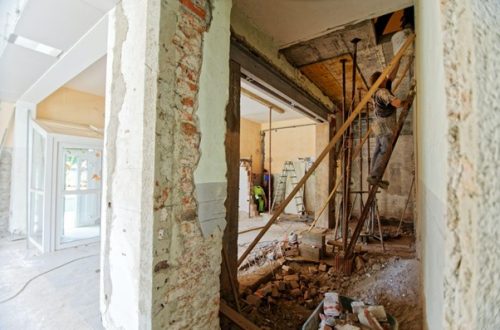Before getting started in the welding trade, it’s necessary to be aware of safety issues. Welders can protect themselves from accidents or burns by using personal protective equipment and conducting a risk assessment. What do you need to look out for when you start a welding project? Check out this list for the most common safety issues.
Welder’s Flash
Exposing the eye to ultraviolet light causes sunburn-like damage to the cornea. This is often referred to as “welder’s flash.” A welding torch is a source of UV light which can cause blurred vision and sore eyes, often requiring medical attention. To avoid welder’s flash, protective equipment such as a welder’s mask or safety glasses will reduce the exposure to light and keep your eyes safe. Glasses should be at the top of your list of required welding tools, so see a specialist like WIA to grab some before you start any project.
Electric Shock
As with many industrial operations, there is a risk of electric shock or electrocution with welding. Direct contact with an electrode or live wire, or by accidentally touching an unearthed tool, can cause an electric shock or even electrocution in some instances. To avoid this risk, the welding area should be well ventilated, free of live wires, and away from water or cooling-off bays, plus welders should avoid leaning against the material. All welding sheds should have shutdown devices to stop major incidents.
Exposure to Fumes
Welding uses gases and metals that can expose the operators to dangerous fumes. Some gases that are common in welding include cadmium and manganese, both of which can irritate the respiratory system. Long term exposure to above-average levels of fumes can result in health problems such as chest soreness, headaches, nausea or fatigue. In extreme cases, hearing and nervous system problems can arise from fume exposure. When welding in a confined space, ventilation systems such as exhausts or fans are necessary and the welder should wear respiratory protection equipment.
Burns
The potential of a burn is high for a welder. Accidentally making contact with a hot work piece or sparks can cause significant and painful burns. Personal protection equipment such as safety glasses, welding gloves, and even boot toppers reduce the risk of a bad burn. Wearing glasses can prevent debris, metal fragments, or sparks from hitting your eyes, while boot toppers or longer pants covering the top of your boots stop fragments dropping onto your feet.
Risk of Fire
When welding, there is no shortage of ignition sources. Before you get to work, clear the welding area of flammable materials such as fuel, oil, paint, wood and cardboard. Professional welders should be sure that the shed or workshop is free of dry leaves and bark as well. All of these items can quickly escalate into a fire if a spark should make contact with them. With their being a chance of a fire make sure you are prepared. Whether it’s the United States or United Kingdom, the first thing you want are fire exit signs. There is a variety of different fire exit signs for UK businesses as well as other countries. Kit out your welding shed with suitable fire extinguishers and fire blankets so you are prepared if faced with an emergency situation.
How do you stay safe when welding? Are there safety measures that you regularly take before you begin a project? Share your tips in the comments below.





